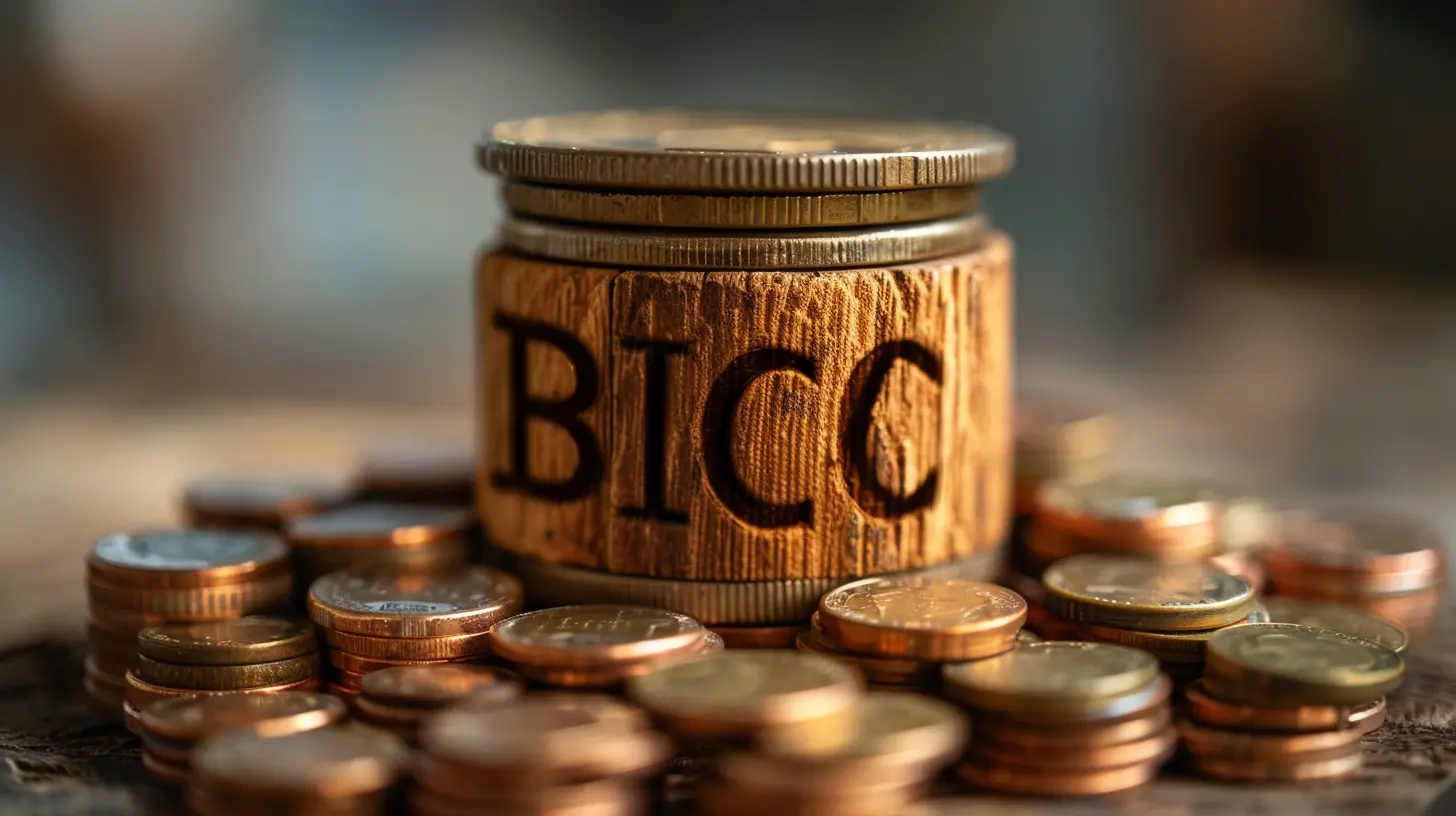Why Portfolio Diversification Is More Important Than Ever
2 June 2025
Investing has always come with its fair share of risks, but in today's financial landscape, the stakes feel higher than ever. With unpredictable market swings, economic downturns, and geopolitical tensions, relying on a single investment to carry your financial future is a gamble you don’t want to take.
That’s where portfolio diversification comes in. It’s like not putting all your eggs in one basket—because if that basket drops, you’re left with a mess. Whether you're a seasoned investor or just starting, understanding why diversification is crucial can make a huge difference in your long-term success.
In this article, we’ll break down why portfolio diversification matters now more than ever, how it works, and practical ways to implement it in your investments. 
What Is Portfolio Diversification?
In simple terms, portfolio diversification is the strategy of spreading your investments across different asset classes, industries, or geographical locations to minimize risk. Instead of betting all your money on a single investment, you allocate funds across a mix of assets. This way, if one part of your portfolio takes a hit, the others help cushion the blow.Imagine a buffet—if one dish turns out to be bad, you still have plenty of other options to enjoy. That’s how diversification helps investors—by reducing the impact of any single investment's poor performance. 
Why Portfolio Diversification Is More Important Than Ever
1. Market Uncertainty Is at an All-Time High
The stock market has always been volatile, but in recent years, it has felt like riding a roller coaster. Events such as the COVID-19 pandemic, inflation concerns, interest rate hikes, and geopolitical conflicts have made markets more unpredictable.Without diversification, a single downturn can wipe out a large portion of your wealth. But if you invest across different asset classes—stocks, bonds, real estate, and commodities—your portfolio remains more stable even when certain areas suffer losses.
2. Inflation Is Eating Away at Returns
Inflation is one of the biggest threats to modern investors. As the cost of living rises, the value of money sitting in a single asset (like cash or bonds) diminishes.Diversifying into assets that historically perform well during inflation—such as commodities, real estate, and stocks—can help protect your purchasing power. A well-diversified portfolio helps ensure that some of your investments grow even as inflation erodes the value of others.
3. The Rise of Global Investment Opportunities
Investing isn't just limited to your home country anymore. With easy access to international markets, you can diversify geographically, spreading risk across various economies. If one country’s economy struggles, your investments in other regions can help balance your portfolio.For instance, while U.S. stocks might be struggling, emerging markets in Asia or Latin America could still be growing. By investing globally, you reduce the risk of being too dependent on a single economy.
4. Technology Disruptions and Industry Shifts
Technology is rapidly changing industries. Companies that were once giants (like Blockbuster or Nokia) have been replaced by new powerhouses (like Netflix and Apple). If all your investments are tied to a specific industry, you could be in trouble when that sector declines.By diversifying across different industries—tech, healthcare, consumer goods, renewable energy—you increase your chances of being on the winning side of these shifts.
5. Protection Against Black Swan Events
Black Swan events are rare, unpredictable occurrences that have huge financial consequences. The 2008 financial crisis, the COVID-19 market crash, and the dot-com bubble are perfect examples.Having a well-diversified portfolio helps mitigate the impact of such events. Even if one segment of your investments crashes, others might remain stable or even grow, preventing catastrophic losses. 
How to Diversify Your Investment Portfolio
Now that we’ve established why diversification is essential, let's talk about how to achieve it effectively.1. Invest Across Different Asset Classes
A truly diversified portfolio includes a mix of asset classes. Here are the key ones to consider:- Stocks – Higher risk but higher potential returns. Consider mixing large-cap, mid-cap, and small-cap stocks.
- Bonds – Offer stability and lower risk. Government and corporate bonds are popular choices.
- Real Estate – Provides passive income and a hedge against inflation.
- Commodities – Gold, silver, oil, and agricultural products can protect against inflation.
- Cryptocurrency – Highly volatile but has potential for high returns if managed properly.
2. Diversify Within Each Asset Class
Diversification doesn't stop at asset classes. You should also spread your investments within each category.For example:
- In stocks, invest in different industries (tech, healthcare, finance, energy).
- In bonds, mix short-term and long-term bonds.
- In real estate, consider different types of properties (residential, commercial, REITs).
3. Invest in Different Geographical Regions
Relying solely on one country's economy can be a risky move. Consider this:- U.S. stocks may dominate the market, but they can be affected by domestic issues.
- European markets offer stability but can lag in growth.
- Emerging markets (like India or Brazil) bring higher risks but also higher reward opportunities.
A global investment strategy helps reduce localized risks and benefits from growth in different regions.
4. Include Alternative Investments
Beyond traditional stocks and bonds, alternative investments can add another layer of diversification:- Hedge Funds – Designed to perform well in various market conditions.
- Private Equity – Investing in startups or companies before they go public.
- Collectibles – Art, wine, and vintage cars can hold value over time.
These alternatives may not be for everyone, but they can offer protection during volatile markets.
5. Regularly Rebalance Your Portfolio
Diversification isn’t a one-time thing—it requires ongoing maintenance. Over time, some investments will grow faster than others, throwing off your ideal asset mix.Rebalancing ensures you're not overexposed to a single area. For example, if stocks suddenly make up 80% of your portfolio instead of your intended 60%, you may want to sell some stocks and reinvest in bonds or real estate to maintain balance. 
Mistakes to Avoid When Diversifying
While diversification is key, it’s possible to overdo it or make mistakes. Here are some pitfalls to watch out for:- Over-diversification – Spreading investments too thin across too many assets can hurt returns. Stick to a balanced approach.
- Ignoring Correlation – Investing in similar assets (like two tech stocks) isn’t true diversification. Ensure your assets aren’t too closely related.
- Not Reviewing Performance – Your portfolio needs regular check-ups. Set a schedule to review and adjust your investments accordingly.
Final Thoughts
With today’s unpredictable markets, portfolio diversification isn’t just a good investment strategy—it’s a necessity. It protects against market swings, inflation, and unexpected downturns while allowing your money to grow across multiple fronts.The key takeaway? Don’t rely on a single investment to carry you. Spread your risk, keep an eye on market trends, and adjust your portfolio as needed. By doing this, you’ll set yourself up for long-term financial stability and success.
Are you ready to diversify your portfolio the right way? Start today and build an investment strategy that stands the test of time!
all images in this post were generated using AI tools
Category:
Portfolio DiversificationAuthor:

Harlan Wallace
Discussion
rate this article
3 comments
Desiree Hurst
Great insights! Diversification is crucial in today's unpredictable market. It’s like having a safety net that helps manage risks while maximizing potential gains. Keep it up!
June 11, 2025 at 3:24 AM

Harlan Wallace
Thank you! I appreciate your feedback and completely agree—diversification is essential for navigating today's market challenges.
Eleanor McIntire
Strategic diversification mitigates risk, enhances stability in today's volatile markets.
June 10, 2025 at 10:29 AM

Harlan Wallace
Absolutely! Strategic diversification is essential in today’s unpredictable markets, as it helps spread risk and stabilize returns.
Trevor Lamb
In today's volatile market, portfolio diversification mitigates risk and enhances long-term stability. As economic uncertainties grow, spreading investments across various assets can safeguard against downturns, ensuring more resilient financial health and potentially higher returns for investors.
June 5, 2025 at 2:25 AM

Harlan Wallace
Thank you for your insightful comment! You’re absolutely right—diversification is key to navigating today’s market volatility and securing long-term financial stability.



